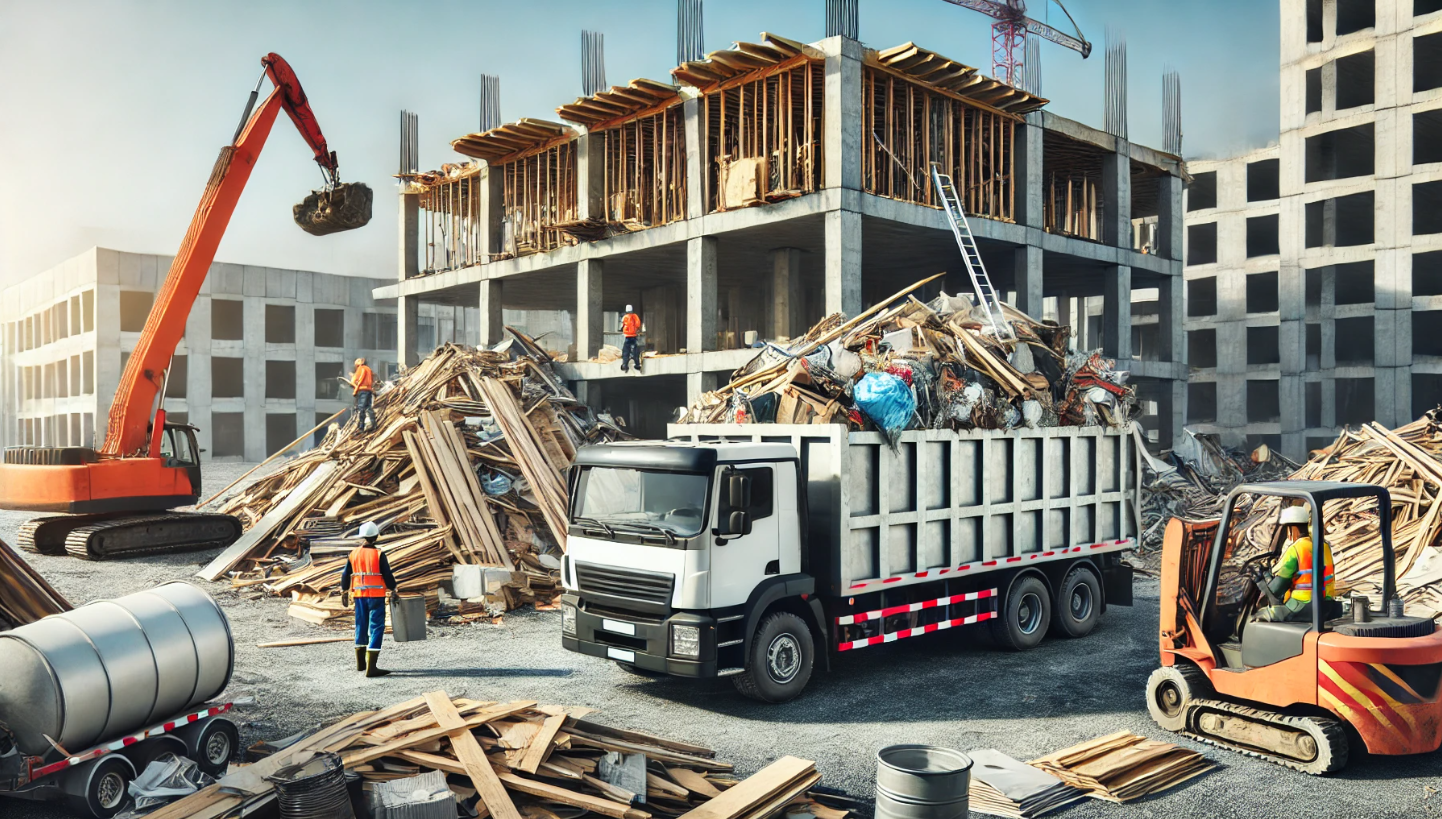
Simplify Your Cleanup with Construction Debris Removal Services
Construction projects often leave behind a significant amount of debris, from scrap materials to hazardous waste. Efficient cleanup is essential for safety, compliance, and maintaining a professional worksite. This guide explores the benefits of construction debris removal services, how they work, and why they’re a must-have for contractors and DIYers alike.
Why Construction Debris Removal is Crucial
1. Ensures Safety on the Job Site
- Cluttered sites increase the risk of accidents and injuries.
2. Saves Time and Resources
- Professionals handle debris removal, letting your team focus on the build.
3. Meets Environmental Standards
- Many companies recycle and responsibly dispose of materials.
4. Maintains Professionalism
- Clean sites boost client trust and enhance your company’s reputation.
5. Compliance with Regulations
- Proper disposal of hazardous materials avoids fines and legal issues.
Steps for Efficient Construction Debris Removal
1. Identify and Sort Materials
- Separate debris into categories like recyclables, reusable materials, and general waste.
2. Partner with a Professional Service
- Choose a licensed and insured provider with construction site experience.
3. Schedule Regular Pickups
- Plan debris removal to coincide with project milestones to avoid pileups.
4. Confirm Eco-Friendly Practices
- Ensure the company follows recycling and responsible disposal policies.
5. Prepare for the Final Clean-Up
- Post-project removal ensures the site is safe and presentable for handover.
Common Types of Construction Debris
| Debris Type | Examples | Disposal/Recycling Options |
|---|---|---|
| Concrete & Asphalt | Broken slabs, bricks, pavement | Crushed for reuse in new projects. |
| Wood | Scrap lumber, pallets, frames | Recycled into mulch or composite boards. |
| Metals | Pipes, rebar, wiring | Sent to metal recycling centers. |
| Drywall | Gypsum boards, plaster | Reused in new drywall manufacturing. |
| Hazardous Waste | Paint cans, adhesives, solvents | Requires specialized disposal facilities. |
| General Trash | Packaging, insulation, other non-recyclables | Transported to landfill or incinerated. |
Benefits of Professional Construction Debris Removal
1. Comprehensive Cleanup
- Services handle all types of debris, from heavy items to hazardous materials.
2. Time Efficiency
- Minimize downtime with fast and efficient removal.
3. Heavy Lifting Assistance
- Avoid strain or injury by leaving the labor to trained professionals.
4. Cost-Effective
- Bundled services often include sorting, hauling, and disposal at competitive rates.
5. Eco-Friendly Solutions
- Providers prioritize recycling and reducing landfill contributions.
Industries That Benefit from Construction Debris Removal
1. Residential Contractors
- Streamline cleanups during home renovations and builds.
2. Commercial Builders
- Ensure large-scale sites remain organized and debris-free.
3. Demolition Experts
- Clear rubble and prepare sites for new projects.
4. DIY Homeowners
- Convenient for those tackling renovations or landscaping projects.
5. Real Estate Developers
- Enhance curb appeal by removing unsightly debris from properties.
FAQs About Construction Debris Removal
1. What items are typically accepted in construction debris removal?
- Most services accept concrete, wood, drywall, metals, and general trash. Hazardous materials may require special handling.
2. How much does construction debris removal cost?
- Costs vary depending on volume, type of debris, and location. Typical pricing ranges from $300 to $1,000 for larger projects.
3. Are services available for small-scale DIY projects?
- Yes, many providers cater to both large contractors and individual homeowners.
4. What happens to the materials after removal?
- Recyclables are processed, reusable items are donated, and waste is responsibly disposed of.
5. Can I schedule recurring pickups for ongoing projects?
- Absolutely! Many providers offer flexible scheduling to align with your project timeline
